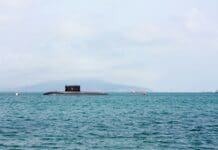This post is also available in:
 עברית (Hebrew)
עברית (Hebrew)
As electronic warfare (EW) threats become more complex and dynamic, traditional methods of testing and development are no longer sufficient. The U.S. Defense Advanced Research Projects Agency (DARPA) has responded with the creation of the Digital RF Battlespace Emulator (DRBE), a new platform designed to support the next generation of radio frequency (RF) systems.
According to the press release, DRBE is the first of its kind: a fully software-defined, real-time RF emulation environment capable of simulating large-scale, high-fidelity EW scenarios. Unlike conventional open-air testing or static simulations, DRBE allows multiple synthetic RF elements to interact simultaneously in a controlled virtual environment. This provides developers with the ability to evaluate AI-driven EW technologies and optimize performance under realistic conditions—without the constraints or risks of live field testing.
At the core of the system is a high-performance, real-time computing infrastructure built on wafer-scale technology. It currently runs on what is described as “the world’s largest processor”, designed for ultra-low latency and massive data throughput. This level of computational power is essential for maintaining timing accuracy during complex RF engagements—particularly as modern EW tactics rely on speed, precision, and adaptability.
The first DRBE installation is scheduled to be delivered to a U.S. Navy laboratory by the end of 2025. It will become part of the Department of Defense’s broader testing and evaluation infrastructure, where it is expected to support development of new EW payloads and accelerate system validation cycles.
Looking ahead, DARPA plans to further expand the system’s capabilities by incorporating advanced optical interconnects. This next stage will enable faster data exchange between hundreds of wafer-scale units, significantly increasing the scale and complexity of the scenarios that can be emulated. Potential applications are expected to go beyond EW, with future use cases including autonomous systems testing, advanced materials research, and the development of digital twins.
With DRBE, DARPA introduces a flexible and scalable testing environment aimed at supporting the evolving demands of RF system development in contested environments.


























